Habitat Burns, Burning Love, and Loving Butterflies at Beazell Memorial Forest
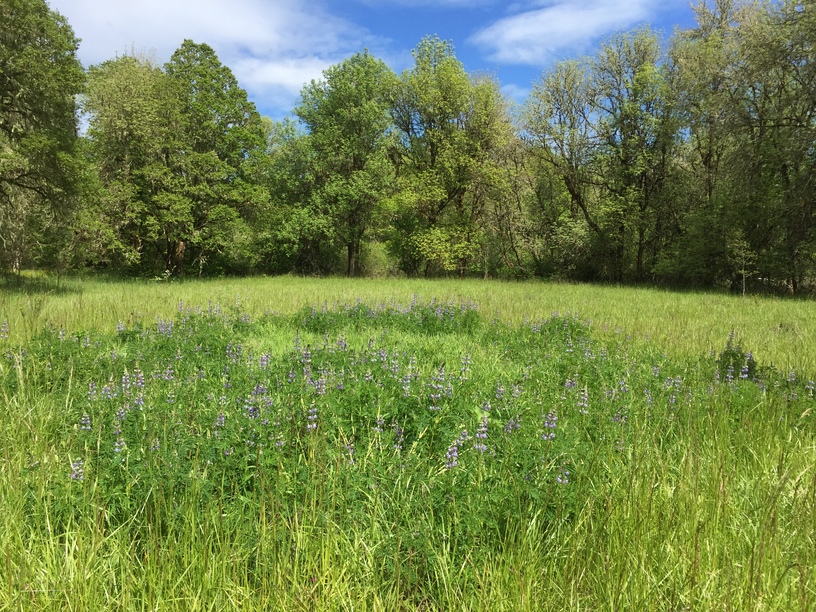
It’s that classic love story: boy meets girl, boy buys forest, girl marries boy, boy plants 100,000 trees.
Okay, not classic, exactly, but sweet, definitely.
When Fred Beazell bought over 500 acres of former farmland near Corvallis in the early sixties, he had dreams of living on the land with his long-time sweetweart, Dolores Anthony. The couple married a few years later, but for decades continued to live in Silicon Valley, where they both worked in tech. Still, Fred made frequent weekend trips to the land and found immense joy in digging holes and planting seedlings – over 100,000 of them, in fact. When they retired in 1991, Fred and Dolores finally decided to move to the forest and build their dream home there. The couple enjoyed two happy years on the land together – birdwatching, hiking, and watching Fred’s trees grow around them – before Dolores passed away.
Without children to pass the land to, Fred decided to make the forest a memorial to his beloved wife. When he died in 2000, the 586-acre property and the Beazell house on it were donated to Benton County as Beazell Memorial Forest – the largest gift the county had ever received. Fred envisioned a memorial forest that could provide habitat for wildlife and be an example to visitors of good land stewardship. He understood that thinning the forest would allow it to be self-sustaining, and that careful management could help perpetuate the property’s special qualities.
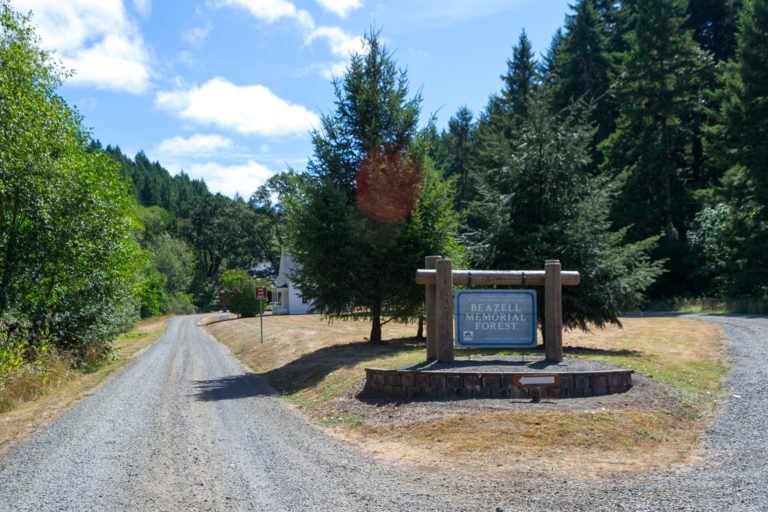
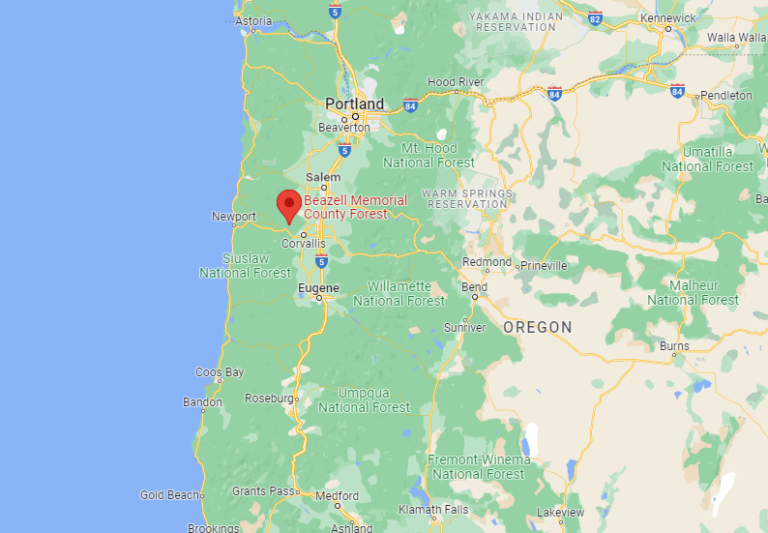
Though we never met Fred or Dolores, we think they would be pleased to see how the County has stewarded the land over the past two decades. The forest is FSC®-certified through NNRG’s group FSC® certificate. Benton County has thinned or completed variable retention harvests on about 300 acres of some of the densest stands of Douglas-fir. The harvests encourage the growth of older forest characteristics by removing the weakened and suppressed trees and freeing up space, nutrients, and water for the remaining trees to grow bigger, faster.
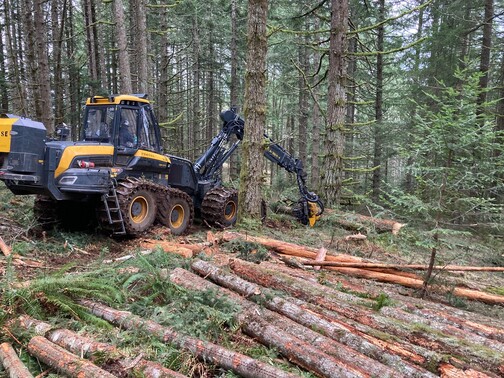
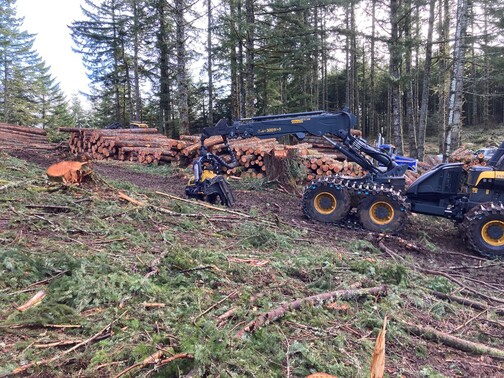
A forwarder being used to move logs during a thinning in Beazell Memorial Forest. Photo courtesy of Adam Stebbins, Benton County
The harvests also generate revenue: since the forest is held in trust, any harvest income goes toward management of the property’s buildings, trail networks, wildlife habitat, and roads. Some of the harvested trees have been milled into lumber used to restore a historic 1930s barn on the property, which now acts as an education center and public event space.
The County is also working to return parts of Beazell Memorial Forest to open meadow and oak savanna – which more closely resembles the landscape cultivated by indigeneous tribes in the Willamette Valley since time immemorial. The land encompassing the present-day Benton County is the traditional homeland of the Champinefu band of the Kalapuya, whose descendants are now affiliated with the Confederated Tribes of Siletz Indians and the Confederated Tribes of Grande Ronde. The Kalapuya periodically burned the land around them to keep oak woodlands open and encouraged the growth of plant species used for food, weaving, and other cultural activities. The burning also promoted food for wildlife like elk, deer, and small game. When settlement began in the Willamette Valley in the 1840s, diseases brought by white settlers decimated indigeneous populations, and fire virtually disappeared from the landscape.
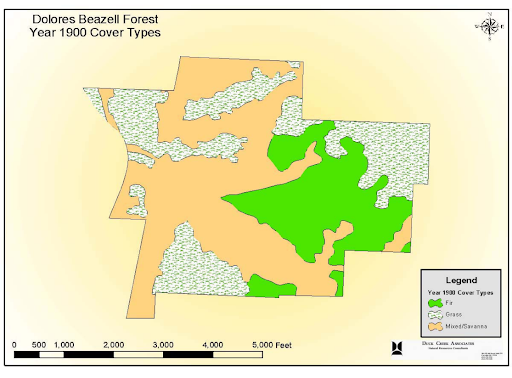

Maps comparing the historic land cover types across Beazell Memorial Forest in the early 20th century and the early 21st century. Once dominated by grasslands and savannas, by 2000 the forest was largely covered by Douglas-fir with scattered grasslands and savanna. Cover types | Green = Fir | Beige = Savanna | Green/white dotted = Grassland
By the time Fred Beazell left his land to the County, a few intact patches of oak savanna and meadow still existed across the property. Incredibly, in 2004 the County found a small population of Taylor’s checkerspot butterfly clinging to life in the meadows – the only population known to exist in Oregon at the time. The Taylor’s checkerspot is a Washington state-endangered species and also listed under the U.S. Endangered Species Act. (Oregon does not include invertebrates in its list). Today, the butterfly is limited to only 15 scattered sites throughout the Pacific Northwest: one in Canada, twelve in Washington, and two in Oregon – including Beazell Memorial Forest.
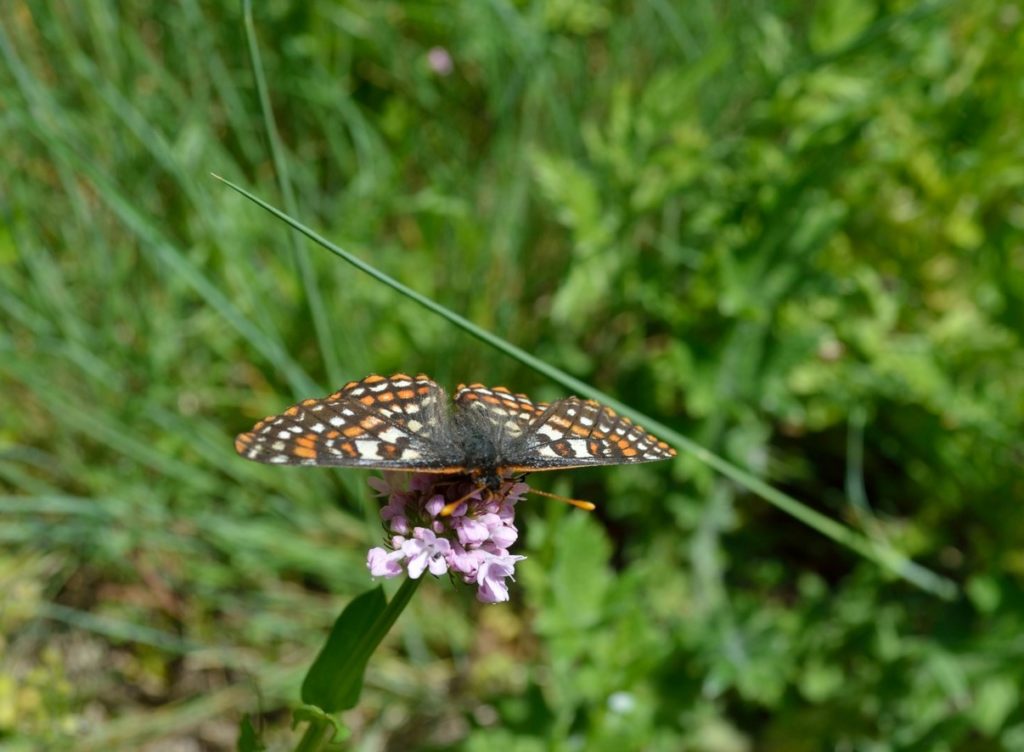
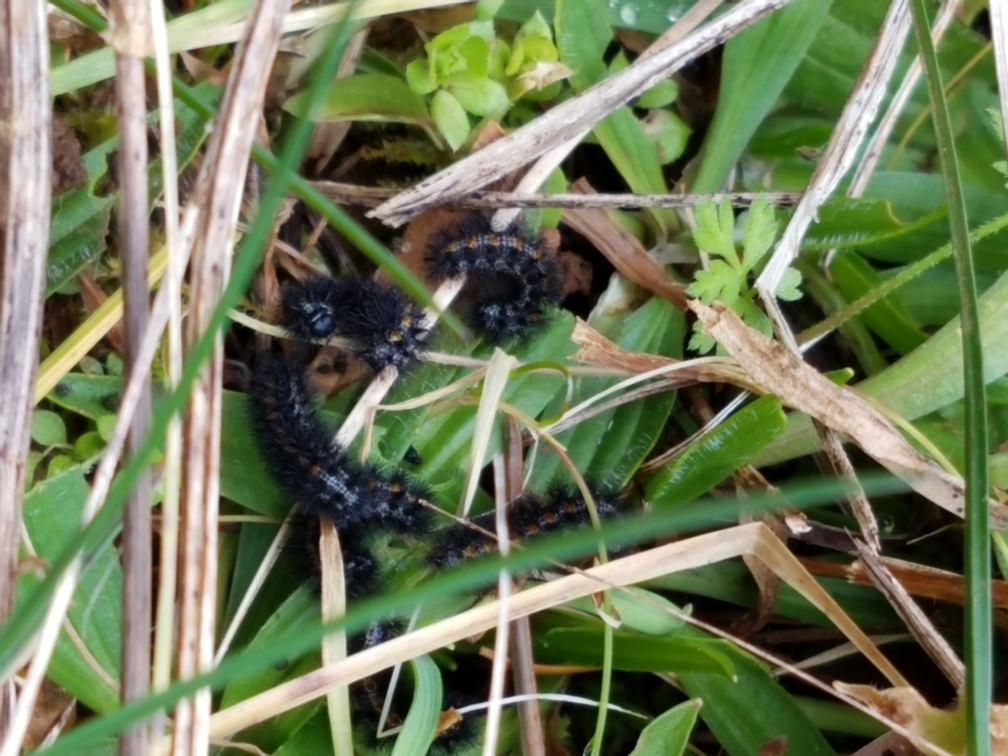
Left, a Taylor’s checkerspot butterfly adult perches on a flower in Beazell Memorial Forest. Right, Taylor’s checkerspot caterpillars spotted clinging to grasses in a Beazell Memorial Forest meadow. Photos courtesy of Adam Stebbins, Benton County.
Undaunted by this discovery, Benton County launched a series of conservation initiatives aimed at conserving and expanding the meadows in the Beazell property. The county now conducts regular 20-acre conservation burns that keep conifer seedlings at bay, release oak seedlings from competition, and encourage grasses and forbs favored by the Taylor’s checkerspot. Slash from thinning operations is burned in piles, and the resulting biochar – a valuable soil amendment – is scattered across the meadow burn scars to encourage the return of grasses, forbs, and wildflowers.
The county has expanded meadows through small-scale clearcuts, and cut corridors through forest stands to link disparate meadows and increase habitat connectivity. In areas where the meadows are being overtaken by noxious weeds like Scotch broom, the county is implementing extensive weed control via herbicides and manual removal. The County has also partnered with the Oregon Zoo and the U.S. Fish and Wildlife Service to capture Taylor’s checkerspot larvae, raise them in captivity (with some help from inmates at the Coffee Creek Correctional Facility), and release adults in other locations in Oregon in an effort to expand the number of populations in the state.
A thriving meadow in a previously expanded meadow cut where low amounts of slash were burned and biochar spread and seededt. Photo courtesy of Adam Stebbins.
Beazell Memorial Forest’s South Meadow after mowing. Mowing reduces or eliminates invasive weed seeds and reduce nonnative grasses from outcompeting native forbs and grasses. Photo courtesy of Adam Stebbins, Benton County.
An illustration of meadow restoration in progress. Photo by Rowan Braybrook, NNRG.
This patch cut connects an existing conservation meadow with a small pocket meadow in Beazell Memorial Forest. Slash within this area will be grappled and piled, weeds controlled, then burned in late fall or winter. The biochar will be spread out within the meadow creation corridor and seeded with a native wildflower seed mix, and, once grown, will expand the habitat available to prairie species like Taylor’s checkerspot butterfly. Photo by Rowan Braybrook, NNRG.
Previous
Next
Beazell Memorial Forest is a wonderful example of how ecological forestry techniques can be used to restore an ecosystem. Hike through the property’s public areas and you might not even realize the forest is being actively managed with thinning and controlled burning – it looks that good!
If you are somehow still not convinced that local governments make amazing forest stewards, we’ll finish with a short list of other great things Benton County is doing at Beazell Memorial Forest:
- Maintaining ~5 miles of trails open to the public year round, including ones that traverse some of Beazell’s meadows.
- In partnership with Oregon State University, maintaining a weather station that collects high-quality microclimate data in 15-minute intervals for the purpose of long-term climate monitoring.
- Creating snags and down woody debris piles make more wildlife habitat for cavity-nesting birds and small mammals.
- Monitoring and maintaining a salmon-bearing stream, Plunkett Stream, and improving fish passage along culverts.
- Offering tours of the Beazell Forest Education Center to educate the public about forestry practices and conservation projects going on in the Forest.
Many thanks to Adam Stebbins, Natural Resources Coordinator for Benton County Natural Areas and Parks, for help in writing this article!

Leave a Reply